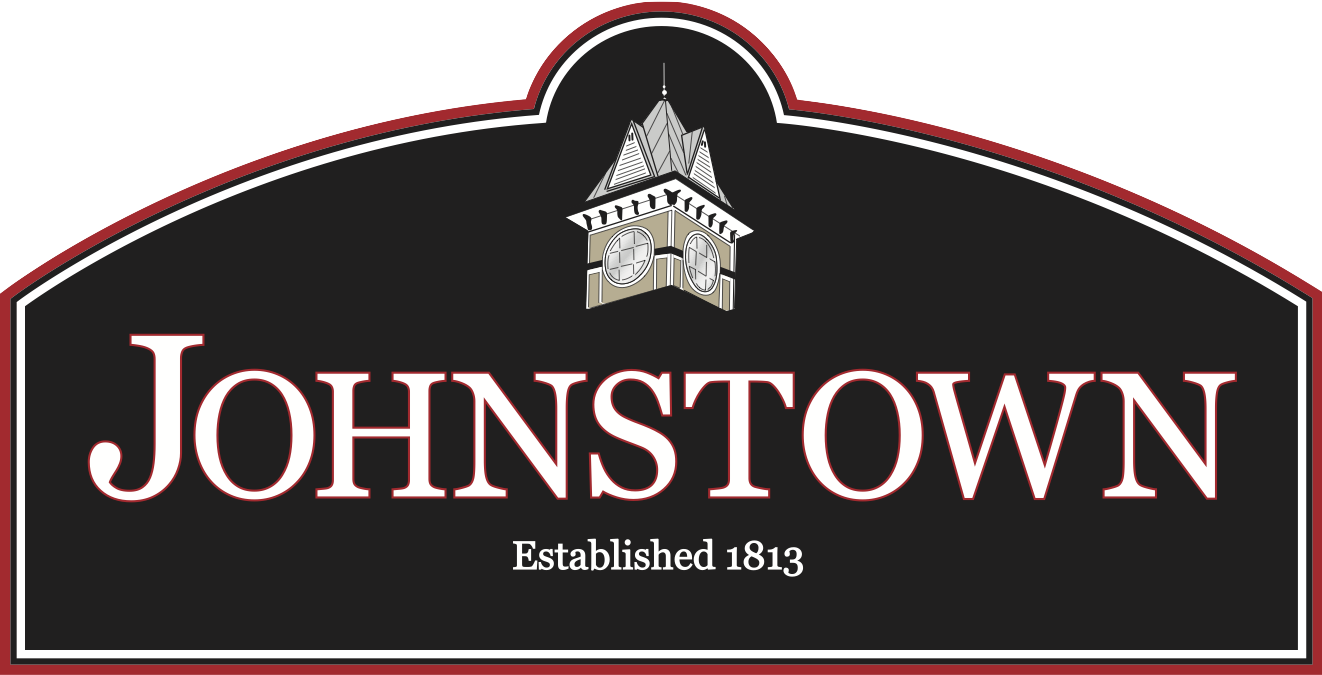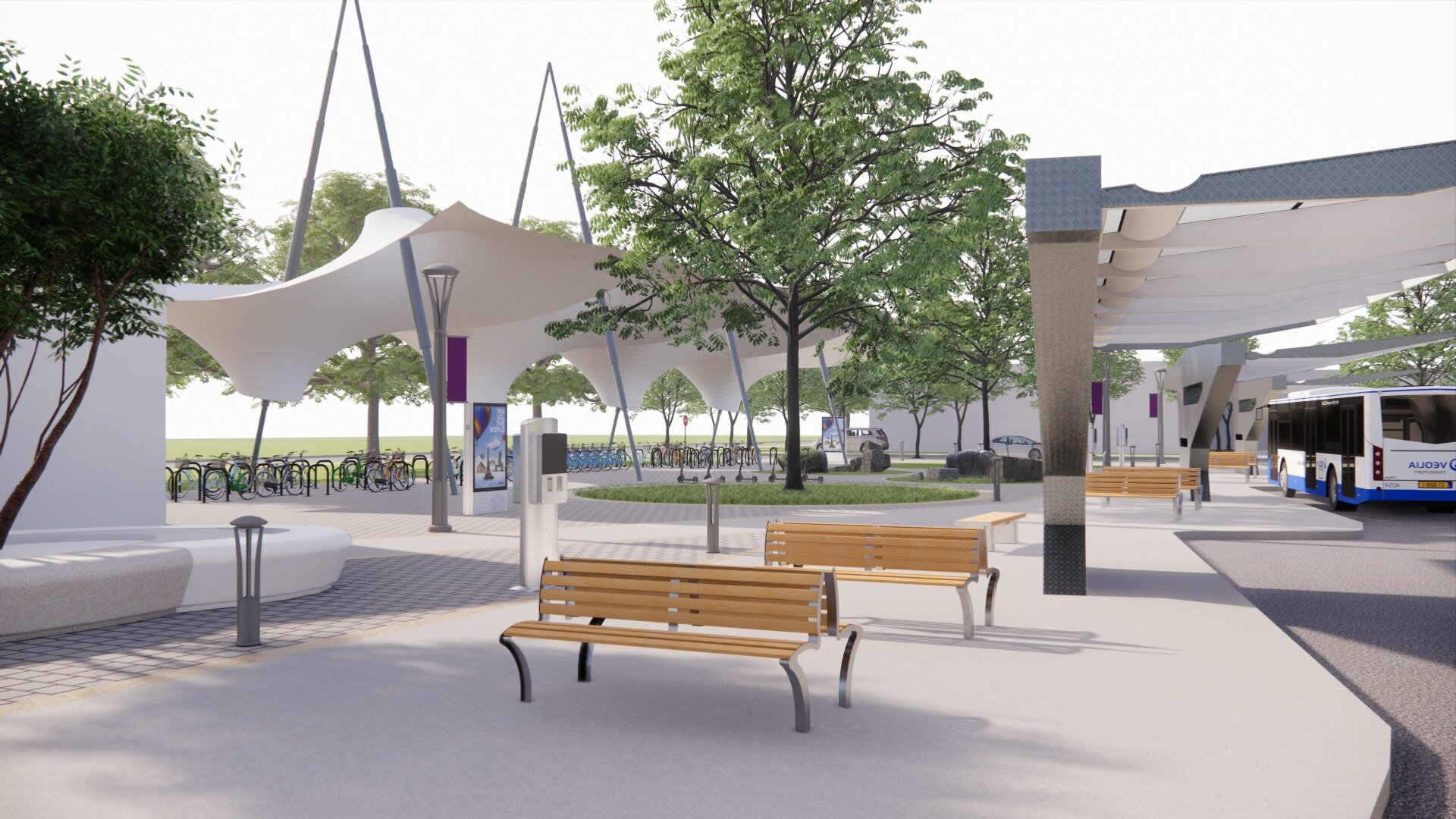
Ohio Rural Mobility Innovation Cluster

We are dedicated to developing a regionally focused rural mobility ecosystem that connects our people to the region’s employment centers and quality of life amenities and fosters innovation in the emerging mobility industry.
Rural Connected Mobility System
Concept Design for Johnstown Mobility Hub
Our vision will develop one regional mobility hub and six local mobility hubs similar to a hub and spoke design while providing interconnectedness between coalition communities. A mobility hub is a recognizable place with an offer of different and connected transport modes supplemented with enhanced facilities and information features to both attract and benefit the traveler. This model will allow local communities to be connected through various modes of transportation and technology.
A mobility hub is designed and is spatially organized in an optimal way so as to facilitate access to and transport between modes, including human-powered, automated, and shared modes, as well as provide extra transport-related and digital services. Our mobility hubs will have four distinct key characteristics:
1. Co-location of public and shared mobility modes
2. The redesign of space to reduce private car space and improve the surrounding public realm
3. An electronic wayfinding system which identifies the space as mobility hub which is part of a wider network and ideally provides digital travel information
4. Acting as a convening space for each local community to provide the associated services needed for their community
Our regional mobility hub network will have a dramatic impact by maintaining or elevating the current quality of life of those living and working in the region. Those impacts include but are not limited to:
Smarter sustainable transport planning for sustainable and equitable modes reducing the dominance of the private car and associated problems of congestion, carbon emissions, air quality and social exclusion. Creating a hierarchical network of such hubs, creates an attractive, integrated, viable alternative mobility lifestyle.
Convenient multi-modal trips, with the possibility of seamless switches and improved links between different layers of transport such as the core public transport network and shared services.
Choice of modes encourage people to think multi-modally and are a complement and enabler of full digital integration of services allowing people to reduce their car use and the associated impacts.
Plugging the gaps in the public transport network In rural areas they can perform a sustainable ‘first or last mile’ connection to the nearest bus or railway services, in a cost effective way.
Improves safety and more comfortable by offering a safer and more comfortable dwell time which will lead to improved access for more vulnerable users.
Improved accessibility It is possible for mobility hubs to provide space for adapted and inclusive modes as part of overall transport solutions.
Raises the profile of shared and sustainable travel modes with the associated benefits of reduction in car use.
Improved public realm for the benefit of pedestrians, cyclists and business owners addressing parking problems and creating additional facilities makes for a better experience for the traveler, increasing patronage.
Management of emerging services: In addition they help to solve the issue of managing “street clutter” from dockless / free floating micro-mobility services and provide a natural home for EV charging infrastructure.
Mobility Factory Innovation Center (MFIC)
Concept design of the Mobility Factory Innovation Center
Located in Johnstown is a redevelopment opportunity to re-purpose a 30 acre facility to create jobs, attract new cutting edge advanced mobility industry companies, and help drive economic development in the region and state. This site has a 50,000 square foot building and eleven other structures which will be converted into high-tech laboratories and micro manufacturing facilities. This project will re-purpose existing facilities to become an epicenter of innovation for new mobility modes and technologies. The center will support entrepreneurs and start-ups in their effort to innovate and create businesses in the mobility industry.
Multi Modal Trip Planning & Trip Optimization Technology
The City of Johnstown has already begun developing new technology through a $250,000 grant from the Licking County Area Transportation Study to develop an open-source trip planning and trip optimization technology. Three use cases have been identified: non-emergency medical transportation, employment/labor, and secondary education. The technology will connect passengers and mobility providers, while also communicating the steps/ resources needed to reach the destination. Senator Sherrod Brown’s congressionally directed spending submission to the Senate Appropriations Subcommittee on THUD for $900,000 to fund the completion of the project is currently pending approval.
Build Back Better Regional Challange Application
On October 19, 2021, the City of Johnstown submitted an application to the Economic Development Administration for $500,000 Phase I funds to further develop our concept. Pending approval, the City will submit Phase II application worth $75,000,000 in March 2022.
Our coalition supporting the Ohio Rural Mobility Innovation Cluster (ORMIC) is comprised of seven rural Ohio communities spanning three counties and over 500 square miles, each with a population less than 50,000. All of the communities are rural in nature being spatially separated from large metropolitan regions. Our coalition includes the City of Johnstown, City of Mount Vernon, City of Newark, City of Heath, Village of Granville, Village of Utica, and the Village of Sunbury. Each community within our coalition understands that transportation plays a vital role in the future sustainability of their town. The coalition members are served by three separate and distinct transit providers funded by the County Commissioners and through Federal Highway Administration.
If awarded funding, Johnstown will serve as a lead institution and be responsible for the execution of the BBBRC grant. Each coalition community will assist in the execution of the grant by working with Johnstown to deliver the outcomes described in this program.
In The News
-

Newark Advocate - October 17, 2021
-

Columbus Business First - October 5, 2021




